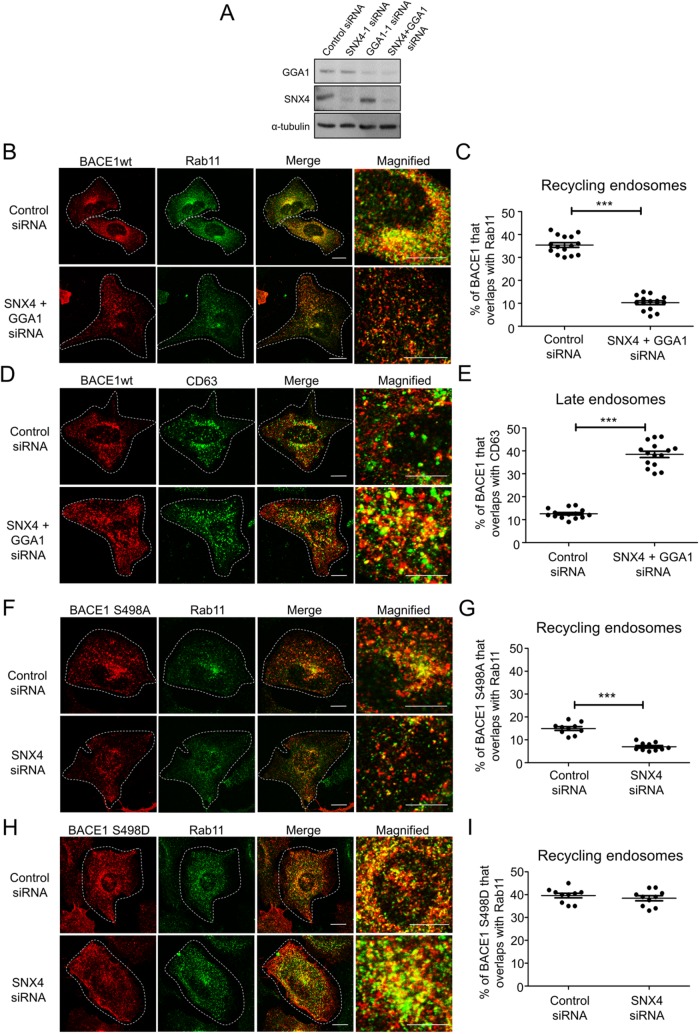FIGURE 7:
Trafficking of BACE1 mutants mediated by GGA1 to recycling endosomes is independent of the SNX4 transport pathway. (A–E) HeLa cells were transfected with either control siRNA or SNX4 and GGA1 siRNA for 72 h and transfected with the wtBACE1 construct for a further 24 h. (A) Immunoblotting of cell extracts with goat anti-SNX4 antibody, rabbit anti-GGA1 antibody and mouse anti–α-tubulin antibody, using a chemiluminescence detection system. (B, D) Confocal microscopic images of fixed and permeabilized monolayers stained with rabbit polyclonal anti-human BACE1 antibodies (red) and (B) mouse monoclonal antibodies to Rab11 (green) or (D) mouse monoclonal antibodies to CD63 (green). Higher magnifications of the merge images are shown. Bars represent 10 μm. (C, E) Percentage of BACE1 at the (C) recycling endosomes and (E) late endosomes was calculated from the percentage of total BACE1 pixels that overlapped with Rab11 or CD63, respectively. Data from three independent experiments. (F–I) HeLa cells were transfected with either control siRNA or SNX4 siRNA for 72 h and transfected with the BACE1 S498A (F, G) or BACE1 S498D (H–I) construct for a further 24 h. (F, H) Confocal microscopic images of fixed and permeabilized monolayers stained with rabbit polyclonal anti-human BACE1 antibodies (red) and mouse monoclonal antibodies to Rab11 (green). Higher magnifications of the merge images are shown. Bars represent 10 μm. (G, I) Percentage of (G) BACE1 S498A and (I) BACE1 S498D at the recycling endosomes was calculated from the percentage of total BACE1 pixels that overlapped with Rab11, respectively. Data from three independent experiments.

